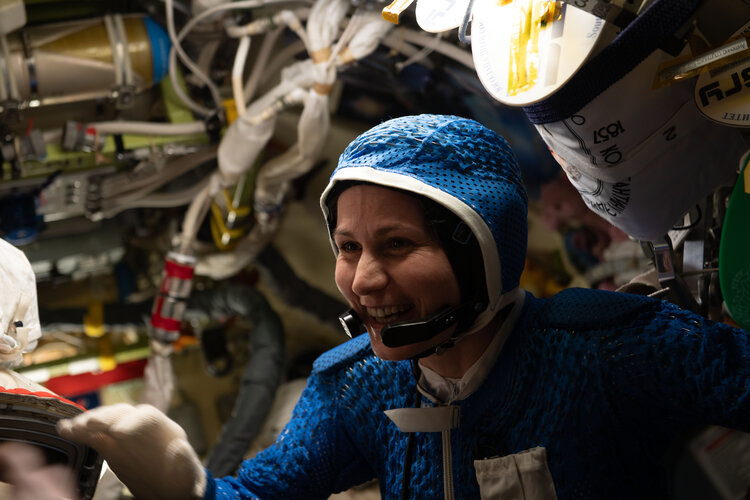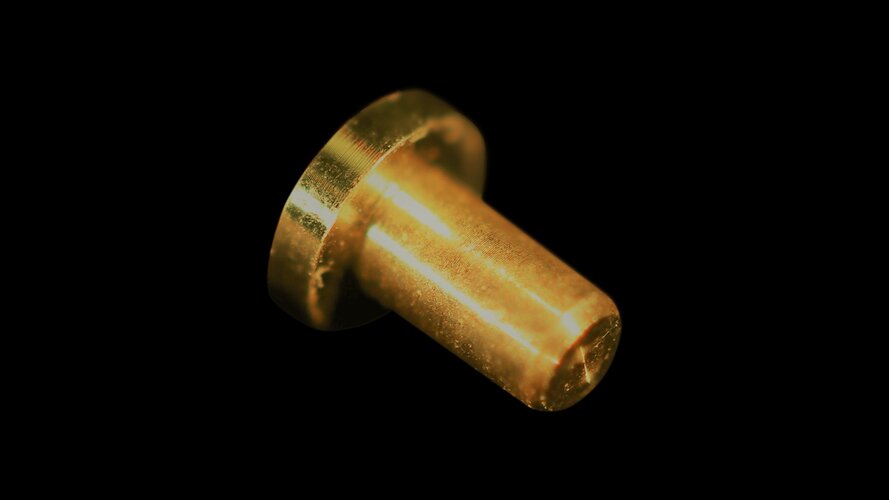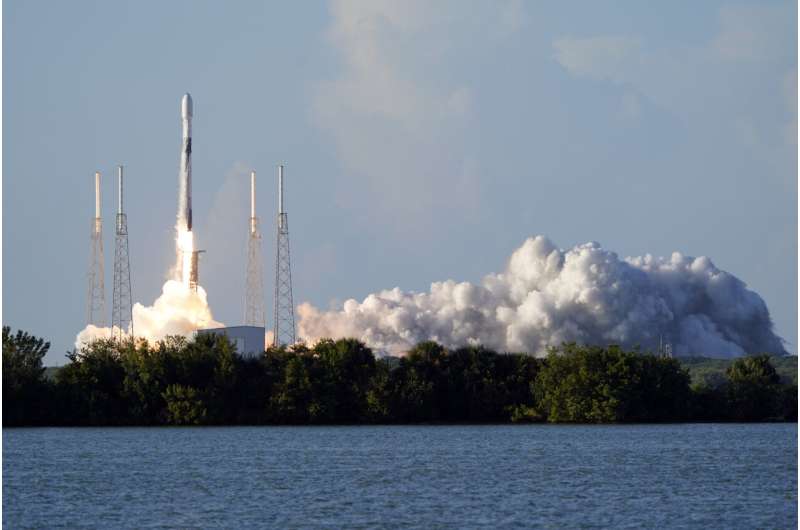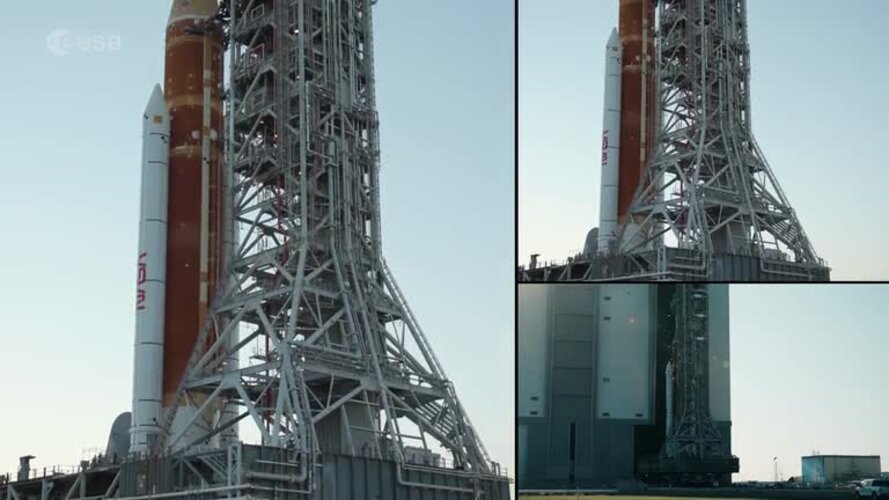
Copernical Team
NASA Goddard's 'Web Around Asteroid Bennu' shows in SIGGRAPH film fest

Alongside cultural heavyweights such as Disney's "Encanto" and Warner Brothers' "The Batman," a short film created at Goddard shares the screen next week at a festival honoring standout works of computer animated storytelling.
"A Web Around Asteroid Bennu" highlights the tricky navigation it took for NASA's OSIRIS-REx mission to collect a sample from asteroid Bennu in 2020. Produced at NASA's Goddard Space Flight Center in Greenbelt, Maryland, the video will show in Vancouver, British Columbia, on Aug. 8 in the SIGGRAPH computer graphics conference's Electronic Theater, a qualifying venue for Academy Award consideration.
OSIRIS-REx completed a series of complicated maneuvers around Bennu over the course of two-and-a-half years before collecting its sample with a touch-and-go, or TAG, maneuver and exiting orbit. The various segments of this web-like flight path were highlighted in full by data visualizer Kel Elkins, of NASA's Scientific Visualization Studio at Goddard.
"I started working with the trajectory data in 2015," Elkins said. "And when you first see an image of all the different maneuvers it looks like a rat's nest. But it was really exciting to see these complicated maneuvers in 3D space.
10 years since landing, NASA's Curiosity Mars rover still has drive

Despite signs of wear, the intrepid spacecraft is about to start an exciting new chapter of its mission as it climbs a Martian mountain.
Ten years ago today, a jetpack lowered NASA's Curiosity rover onto the Red Planet, beginning the SUV-size explorer's pursuit of evidence that, billions of years ago, Mars had the conditions needed to support microscopic life.
100 days of Minerva

ESA astronaut Samantha Cristoforetti was launched to the International Space Station on 27 April as a part of Crew-4 for her second mission, Minerva. One hundred days in, mission Minerva is still going strong. From completing cutting-edge research in the world’s only orbiting laboratory to sharing daily life on the Space Station via TikTok, it’s all in a day’s work for an ESA astronaut.
Pure gold pin for space testing
 Image:
Pure gold pin for space testing
Image:
Pure gold pin for space testing Week in images: 01-05 August 2022

Week in images: 01-05 August 2022
Discover our week through the lens
South Korean spacecraft launched to the moon, country's 1st

South Korea joined the stampede to the moon Thursday with the launch of a lunar orbiter that will scout out future landing spots.
Researchers create the first artificial vision system for both land and water
 Giving our hardware sight has empowered a host of applications in self-driving cars, object detection, and crop monitoring. But unlike animals, synthetic vision systems can't simply evolve under natural habitats. Dynamic visual systems that can navigate both land and water, therefore, have yet to power our machines - leading researchers from MIT, the Gwangju Institute of Science and Technology (
Giving our hardware sight has empowered a host of applications in self-driving cars, object detection, and crop monitoring. But unlike animals, synthetic vision systems can't simply evolve under natural habitats. Dynamic visual systems that can navigate both land and water, therefore, have yet to power our machines - leading researchers from MIT, the Gwangju Institute of Science and Technology ( US Space Force conducts innovative talent acquisition process
 In May 2022, the U.S. Space Force held a Cyber Constructive Service (CCS) Credit Board, in which the service called for applications from civilian cyber professionals to become cyber officers in the Space Force.
Casting a wide net, approximately 1,000 people attended a virtual conference, with more than 400 applying. The board further narrowed the field and 10 cyber professionals accepted
In May 2022, the U.S. Space Force held a Cyber Constructive Service (CCS) Credit Board, in which the service called for applications from civilian cyber professionals to become cyber officers in the Space Force.
Casting a wide net, approximately 1,000 people attended a virtual conference, with more than 400 applying. The board further narrowed the field and 10 cyber professionals accepted Artemis I spacecraft ready for launch
 Video:
00:03:00
Video:
00:03:00
ESA and NASA’s Artemis I spacecraft is cleared for launch after a series of final tests at the US Kennedy Space Center in Florida. ESA’s European Service Module (ESM) will provide electrical power and propel the uncrewed Orion capsule in an extended orbit around the Moon, setting the scene for future crewed missions. ESA has already delivered its second ESM for Artemis II and is currently building its third ESM. Eventually, Artemis III will return astronauts to the lunar surface for the first time in 50 years with the ESM supplying their life support in the form of
Blue Canyon Technologies opens new factory dedicated to manufacturing cubesats
 Small satellite manufacturer and mission services provider Blue Canyon Technologies LLC ("BCT" or "Blue Canyon"), a wholly-owned subsidiary of Raytheon Technologies, celebrated the grand opening of its new CubeSat Factory in Boulder, Colorado, with members of the Boulder Chamber of Commerce at a ribbon-cutting ceremony.
The expanded 31,000-square-foot facility consolidates manufacturing ef
Small satellite manufacturer and mission services provider Blue Canyon Technologies LLC ("BCT" or "Blue Canyon"), a wholly-owned subsidiary of Raytheon Technologies, celebrated the grand opening of its new CubeSat Factory in Boulder, Colorado, with members of the Boulder Chamber of Commerce at a ribbon-cutting ceremony.
The expanded 31,000-square-foot facility consolidates manufacturing ef 
